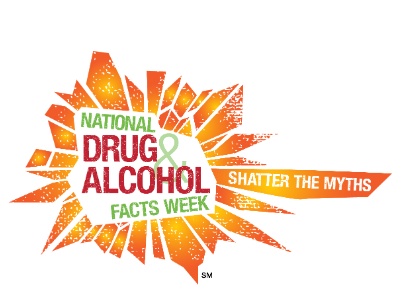Facts About Teen Vaping

Michelle Harris, LMSW, CAADC
National Drug and Alcohol Facts Week is an annual health event held this year during the week of March 18- March 24. It is meant to start conversations with adolescents and teens about the science of drug use and addiction. Launched in 2010 by the National Institute on Drug Abuse and now includes leading organizations, media outlets and other government agencies to help spread the word. In honor of this, I wanted to share information about vaping, as this is the most common form of nicotine use in teens in the United States. We will also be posting educational information throughout the week to aid in educating teens and parents about the dangers of substance use.
Vaping involves the use of battery operated devices used to inhale an aerosol that contains nicotine, flavorings and other chemicals. They can also sometimes include THC. They can sometimes look like regular cigarettes, cigars, pipes and pens. Most of these devices have a cartridge that holds a liquid solution of the nicotine, flavorings and chemicals, a heating element, a battery and a mouthpiece. By puffing on the device, the battery activates the heat source, which vaporizes the liquid to be inhaled. Due to the small size of these devices, they are easily hidden or disguised.
When the liquid in the cartridge is vaporized and inhaled, it enters the bloodstream via the lungs. The nicotine then activates the adrenal glands to release adrenaline. Adrenaline stimulates the central nervous system which increases blood pressure, breathing and heart rate. As with most addictive substances and behaviors, this triggers the brain’s reward system and increases dopamine release. Dopamine is what is commonly referred to as the “happy chemical” and leads to using more nicotine to continue the release of it, regardless of risk.
There are a lot of misconceptions about vaping that are often used to justify use. One of these is that these devices do not contain nicotine and while some do not, most do. This has resulted in as many as 11% of middle school and high school students currently using vapes. There is an estimated 55 million vape users worldwide as of 2021. Teens who use vaping devices are as much as twice as likely to use cigarettes later.
Another misconception is that nicotine consumed through vaping is less dangerous and addictive than cigarettes. Regardless of what form nicotine is consumed by, it is a highly addictive substance. Vaping devices have been found to be less harmful than cigarettes in other ways, which has contributed to high rates of use across all populations. Even with this knowledge, there are still health risks beyond addiction to nicotine that is associated with vaping use. The lungs still get exposed to a variety of chemicals, some of which may include carcinogens and toxic chemicals. Some research has found different brands having different chemicals that cause different effects. Long term health risks are still being researched. Additionally, cartridge development is not well regulated yet, often resulting in them being made in harmful ways, with higher levels of harmful chemicals.
The health risks to teens is especially harmful due to the brain development that is still taking place. Use of any addictive substances can impact the development of the brain’s reward system and make it harder to obtain dopamine in healthy ways later. Nicotine also impacts the parts of the brain that control attention and learning, mood and impulse control.
Talking with our youth population is vital to ensure they have appropriate information and have the best chance of making healthy decisions for themselves. The National Institute on Drug Abuse has made a number of educational videos to assist with starting these conversations and provide education for all ages. They can be found at their YouTube page for Vaping and E-cigarettes.
As always, if you or somebody you know may be struggling with addiction, help can be found at All Things Possible Wellness Center and many other organizations in our community.
Sources:
https://nida.nih.gov/publications/drugfacts/vaping-devices-electronic-cigarettes
